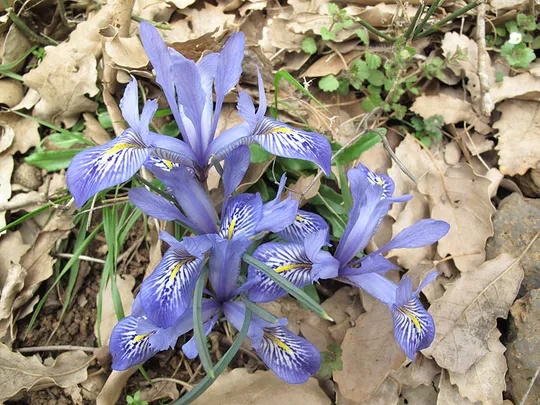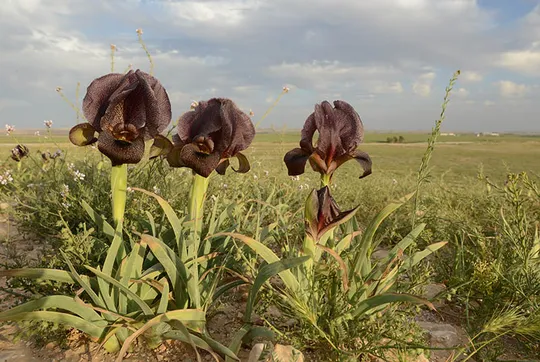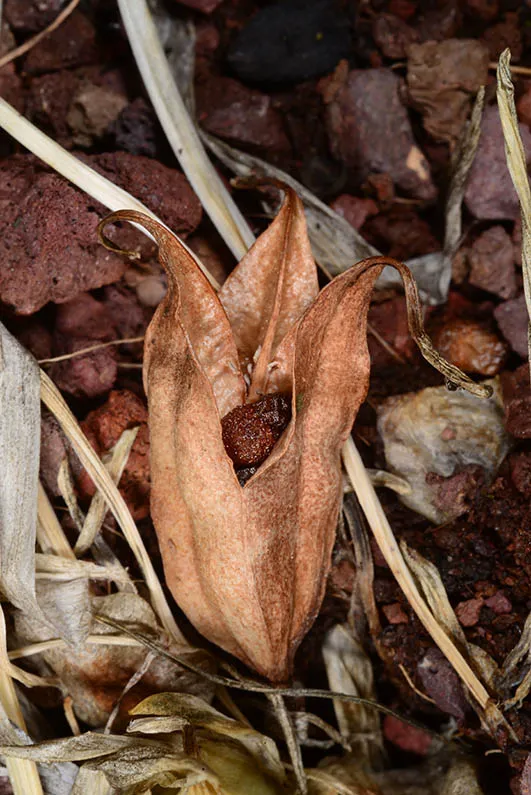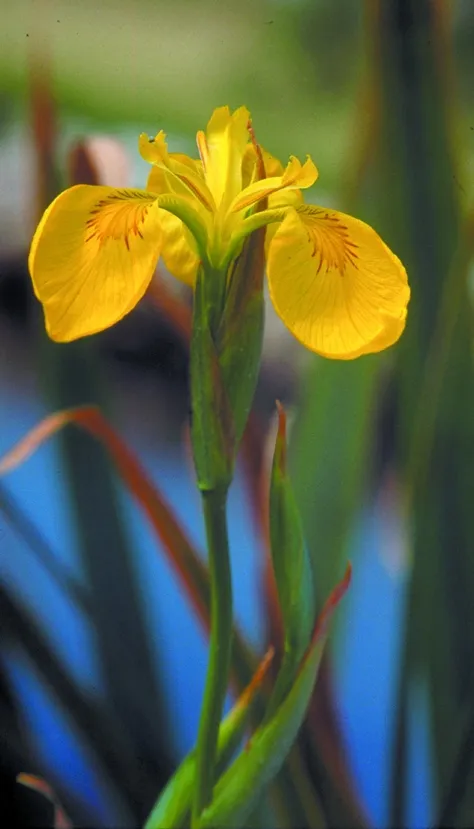Columna's Romulea, Sand Crocus
Romulea columnae
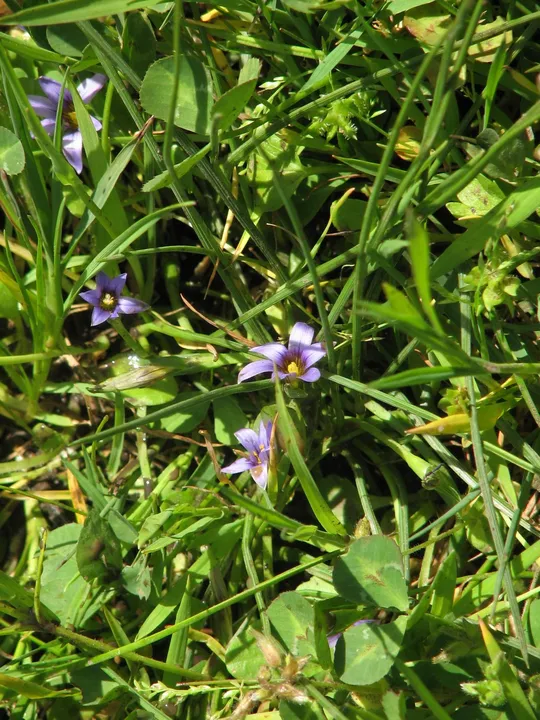
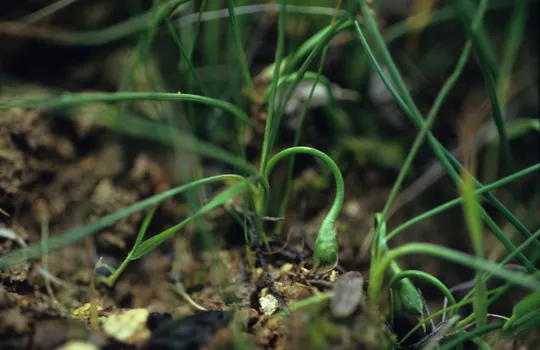
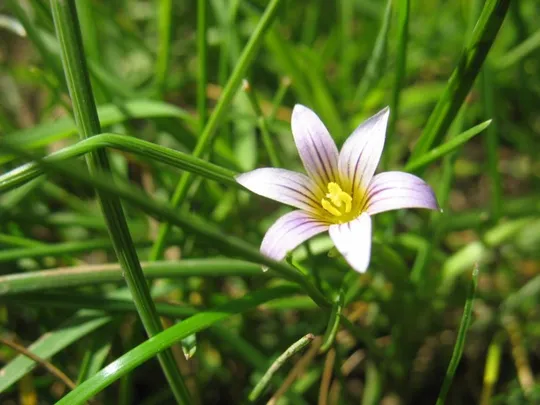
Romulea columnae now grows in
two regions: the Judean Mountains and Samaria, at a single site in each region,
and according to estimates there are a total of three sites. It has been
collected in the Judean Mountains from En Giora in the Ktalav Stream (Ofer
Cohen), but is now extinct in Mount Ora. Another observation from the Judean
Mountains from the Se'adim Ruins requires verification. Ruhama Berliner collected
R.
columnae in Samaria in 1978 north of Baytillu. There are several
additional sites that have been reported from other regions – Wadi Nesher on
the Carmel, Mount Hillel in the Upper Galilee, Odem Forest in the Golan Heights
and the lower Hermon, although it is possible that we are referring to a close unidentified
taxon (see below Systematics and Biogeography).
Mediterranean scrubland,
cliffs and rocks on the edge of Mediterranean woodland.
The genus Romulea consists of
about 90 species, found mostly in South Africa with a few species in the
Mediterranean Basin. This genus demonstrates the ancient source of many
geophytes in the southern section of South Africa and the migration of the
species northwards through the tropical and desert regions to the Mediterranean
Basin, where secondary speciation occurred. This phenomenon is known from other
geophyte genera, e.g. Gladiolus, Androcymbium, Urginea and Moraea.
In Odem Forest
in the northern Golan Heights and on Mount Keta on the lower Hermon, another Romulea species grows, very
similar to R. columnae,
but differing from it by its tepals, which have a yellow base bordered by a
dark purple stripe. This species
was apparently identified
as R. columnae in the Flora Palaestina and was therefore
noted from the Golan Heights in this publication. Oron Perry, the geophyte
expert, notes that Romulea columnae ssp. ramiflora, a subspecies found
mainly in the western Mediterranean, is indeed extremely similar to R.
columnae. Further
research is needed to understand whether it is another local form of R.
columnae in its
extremely broad range, or whether it may be another species, new to the area. Itai
Nahshon once photographed a similar plant from En Zeved on Mount Meron in the
Upper Galilee. The plant has not yet been identified with certainty but it is
clear that it does not belong to the common species in in Israel – R.bulbocodium that has characteristic large
flowers, twice longer than their bracts, and a style longer than the stamens. R. bulbocodium grows in a variety of habitats
in Israel: woodland edges, moist scrubland on red loam, flooded basalt expanses
and spring margins. On the heights of Mount Hermon another species grows – R. nivalis, which is very similar to R.bulbocodium, and is characterized by
membranous corm scales and very short leaves. Some researchers believe that it
does not differ from R.bulbocodium. R. phoenicea, with characteristic dark purple flowers, grows
on the Carmel. The range of this species is limited to southern Lebanon and
northern Israel and it was found once on the Sulam Ridge in the Western
Galilee. It grows on many sites on Mt. Carmel and was therefore not included in
the Red Book
·
There is no
certainty about change trends in the number of Romulea columnae
sites, as the species was found for the first time only
in the 1970s and documentation regarding the Judean Mountains and Samaria sites
is updated only up to the early 1980s. In the case of plants observed in other
regions, there is need of research to verify the taxon identity, nevertheless
information regarding change trends at these sites is lacking as well.
·
The sites in the
Judean Mountains and in Samaria are disjunct, the populations are small and
usually only between a few single to dozens of plants are found on any given site.
The populations of its closely related taxon on the Golan Heights and the lower
Hermon, which has still not been conclusively identified number hundreds to
thousands of specimens. There is a lack of information regarding its
reproductive biology and there is no demographic data about long-term
population trends.
·
The small
numbers of plants in the isolated and fragmented populations pose a reproductive
threat and a risk of random extinction.
·
R. columnae
is only protected in Ktalav Stream in the Wadi Sorek Nature
Reserve.
·
The species is
widely distributed in the Mediterranean Basin and Europe and does not appear on
red plant lists in other countries.
The existence of Romulea columnae at the locations from which it was
collected in Samaria and the Judean Mountains should be verified and the size
of the populations and methods of reproduction and dispersal should be subject
to long-term monitoring. The taxonomy of the populations of the closely
related, unidentified taxon in the Golan Heights and the lower Hermon should be
studied.
Romulea columnae is a widely
distributed plant found along the Mediterranean Basin, the Atlantic coast of
Europe and the Macaronesian Islands (Canary Islands, Madeira and the Azores).
Romulea columnae is a tiny corm geophyte
that grows in Mediterranean habitats in Israel. The species is very rare and is
now known from only three sites. Information regarding its biology and ecology
is scarce and there are doubts about whether some of the populations from the
Golan Heights, Mount Hermon and Galilee belong to this species. R. columnae
is a peripheral species that is not endangered in other countries in the
Mediterranean Basin and Europe.
Current Occupancy Map
| 1000 squre meter pixel | 5000 squre meter pixel | 10000 squre meter pixel | |
|---|---|---|---|
| number of observations | 0 | 0 | 0 |
| in total pixels | 0 | 0 | 0 |
| Family | Iridaceae |
| Classification | On the endangered species list |
| Ecosystem | Mediterranean |
| Chorotype | Mediterranean (Euro-Siberian – Canary Islands) |
| Conservation Site | En Giora, Ktalav Stream |
| Rarity |
1
6
6
|
|---|---|
| Vulnerability |
0
2
4
|
| Attractiveness |
0
0
4
|
| Endemism |
0
0
4
|
| Red number |
1
4.7
10
|
| Peripherality | N |
| IUCN category | DD EW EX LC CR EN VU NT |
| Threat Definition according to the red book | Endangered |
 Based on:
Based on:
